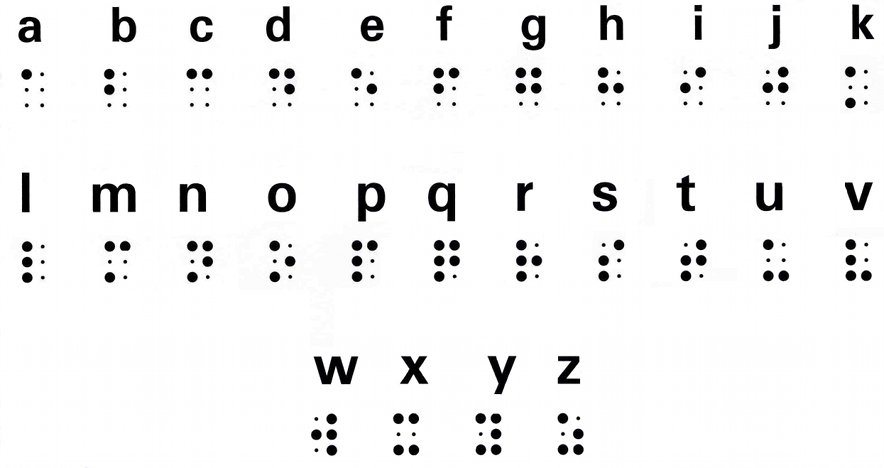A recent interview of reporter Rachel Aviv during the radio program “On The Media” makes some interesting connections to the thinking of Walter Ong and reveals some insights from the blind regarding the significant impact of alphabetic literacy on human thinking. Digital audio technologies continue to develop for the assistance of the blind so Braille seems no longer necessary, but this may be an illusion. Because it is based on the alphabet, Braille seems to have the a greater capacity for promoting intellectual complexity than simply listening to speech.
The oft-quoted observation of Marshall McLuhan that “the medium is the message” is usually applied to electronic technologies, but it is the medium of the almighty alphabet that has had the greatest impact on our consciousness – both positive and negative.
Ong reminds us in Orality and Literacy that “more than any other single invention, writing has transformed human consciousness” and he notes how it freed the human mind from the mnemonic exercises of oral tradition and allowed humans to develop more complex and abstract thought via the alphabet. The alphabet, along with a few phonetic symbols, is capable of representing any speech sound a human might make, but its use for organizing and improving our thinking through writing is its greatest power. By externalizing our thoughts in writing we can more easily revise them and develop their sophistication and complexity. This leads, as we are experiencing, to ever more complex thoughts and technologies.
In her NYT Magazine article “Listening to Braille” Rachel Aviv cites recent studies that seem to verify the complexity-building impact of alphabetic literacy. In a study of two groups of blind children where one group learned Braille for reading and the other used digital audio, the audio only “readers” were less organized in their thinking and their thoughts were less complex. Unlike strictly oral communication and aural reception of information, alphabetic literacy allows us to easily draft, develop and edit our thoughts in ever more sophisticated ways. Through Braille, alphabetic literacy can stimulate the visual cortex of the blind as Aviv notes regarding a series of studies done in the 1990’s demonstrating that “the visual cortices of the blind are not rendered useless, as previously assumed. When test subjects swept their fingers over a line of Braille, they showed intense activation in the parts of the brain that typically process visual input.”
As the digital age continues to transform human communication, in spite of our many new options, we are beginning to see the essential nature of a strong alphabetic literacy for maximum intellectual development. And, to further maximize our intellectual potential we must also know the limits of this most powerful tool. In Understanding Media McLuhan discusses some of the overlooked limitations that alphabetic literacy brings with it and notes the homogenizing influence of “typographic principles of uniformity, continuity and lineality.” (27) We need to cultivate our alphabetic capabilities without being blinded and trapped by them for, as McLuhan notes, there is “nothing lineal and sequential” in any moment of human consciousness – the lineal and sequential are the impositions (or the scars) of the almighty alphabet. As Emerson reminds us in his “American Scholar” graduation address, “Man Thinking must not be subdued by his instruments.”
